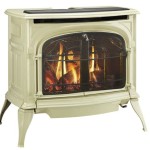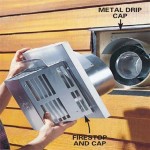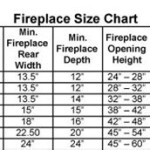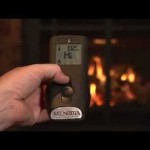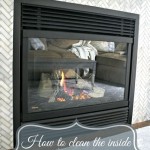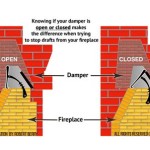Outdoor Wood Burning Fireplace Insert: Enhancing Your Outdoor Living Space
An outdoor wood burning fireplace insert provides a focal point, extending the usability of patios and decks beyond the warmer months. These inserts are designed to be installed within a pre-existing or newly constructed fireplace structure, offering a controlled and efficient way to enjoy the ambiance and warmth of a wood fire outside.
Unlike open-air fire pits, fireplace inserts offer a degree of containment, which can improve safety and efficiency. They can also be a more aesthetically pleasing option for many homeowners, lending a touch of sophistication to outdoor spaces. Understanding the features, benefits, and considerations associated with outdoor wood burning fireplace inserts is vital for making an informed decision.
Key Point 1: Understanding the Functionality and Benefits
An outdoor wood burning fireplace insert functions by containing the fire within a designated firebox, which is typically constructed of cast iron or steel. The firebox is designed to withstand high temperatures and direct radiant heat outwards, warming the surrounding area. A chimney or vent system is connected to the insert, drawing smoke and combustion gases upwards and away from the seating area. This controlled burning significantly reduces the risk of stray sparks and smoke nuisance compared to open fires.
The benefits of using an outdoor wood burning fireplace insert are numerous. Firstly, efficiency is improved. The enclosed firebox allows for more complete combustion of the wood, resulting in increased heat output and reduced smoke emissions. Many modern inserts are designed with airwash systems that circulate air across the glass door, keeping it clean and providing a clear view of the flames. This increased efficiency also translates to lower wood consumption, saving money and reducing the environmental impact.
Secondly, safety is enhanced. The enclosed nature of the insert minimizes the risk of sparks escaping and potentially igniting nearby materials. The controlled combustion also reduces the amount of creosote buildup in the chimney, which can be a fire hazard. Furthermore, the firebox prevents fire from spreading beyond the designated area, enhancing the safety of children and pets.
Thirdly, aesthetics are elevated. Fireplace inserts come in a variety of styles and finishes, allowing homeowners to customize the look of their outdoor fireplace. From traditional to contemporary designs, there is an insert to complement any outdoor décor. The glass door also provides a captivating view of the flames, creating a cozy and inviting atmosphere.
Finally, usability is extended. The radiant heat emitted by the insert allows homeowners to enjoy their outdoor spaces even on cool evenings. This extends the outdoor season, providing more opportunities for relaxation and entertainment. An outdoor fireplace insert can become a central gathering spot for family and friends throughout the year.
Key Point 2: Factors to Consider When Choosing an Insert
Selecting the right outdoor wood burning fireplace insert requires careful consideration of several factors. These factors include size, material, efficiency, venting requirements, and local regulations.
Size is a crucial aspect to consider. The size of the insert should be proportional to the size of the existing or planned fireplace structure and the area to be heated. A larger insert will produce more heat, but it may also require more wood. The dimensions of the firebox will also determine the size of the logs that can be burned. Accurate measurements are essential to ensure the insert fits properly within the firebox opening.
Material is another significant consideration. Inserts are typically made from cast iron or steel. Cast iron is known for its excellent heat retention, which means it will continue to radiate heat even after the fire has died down. Steel is lighter and more durable, offering resistance to warping and cracking. The choice of material will depend on personal preferences and the expected usage of the fireplace.
Efficiency plays a vital role in minimizing wood consumption and reducing emissions. Look for inserts with high efficiency ratings, as these models will burn wood more completely and produce more heat per log. Efficiency is often measured by the percentage of heat that is transferred to the room rather than lost up the chimney. EPA-certified inserts meet stringent emissions standards, further reducing the environmental impact.
Venting requirements are critical for safe and efficient operation. Outdoor wood burning fireplace inserts require a chimney or vent system to exhaust smoke and combustion gases. The size and type of venting system will depend on the size of the insert and local building codes. Professional installation is recommended to ensure the venting system is properly installed and meets all safety regulations. Incorrect venting can lead to smoke backdrafting into the seating area and increase the risk of carbon monoxide poisoning.
Local regulations and permits must be verified prior to installation. Many municipalities have regulations concerning outdoor burning, including restrictions on the type of fuel that can be burned, the size of the fire, and the distance from structures. Obtain the necessary permits before installing the insert to avoid fines or other penalties. Understanding and complying with local regulations will ensure the safe and legal operation of the outdoor fireplace.
Key Point 3: Installation and Maintenance Best Practices
Proper installation and maintenance are essential for the safe and efficient operation of an outdoor wood burning fireplace insert. While some homeowners may be tempted to install the insert themselves, professional installation is highly recommended to ensure it is done correctly and in accordance with all applicable codes and regulations.
Installation typically involves preparing the fireplace structure, installing the insert, connecting the venting system, and ensuring proper sealing around the insert. A professional installer will have the necessary experience and equipment to complete the job safely and efficiently. They will also be able to advise on the proper type and size of venting system and ensure it meets all local requirements. Proper sealing around the insert is crucial to prevent smoke from leaking into the seating area.
Maintenance is an ongoing process that includes regular cleaning and inspection. The chimney should be inspected and cleaned at least once a year to remove creosote buildup. Creosote is a highly flammable substance that can accumulate in the chimney and cause a chimney fire. Regular cleaning will also improve the efficiency of the fireplace and reduce smoke emissions.
The firebox should also be cleaned regularly to remove ash and debris. Ash buildup can reduce the efficiency of the fireplace and make it more difficult to start a fire. A shop vacuum can be used to remove ash from the firebox. The glass door should be cleaned regularly with a glass cleaner specifically designed for wood burning fireplaces to remove soot and creosote. Avoid using abrasive cleaners, as they can scratch the glass.
Regular inspection of the insert and venting system is also crucial. Look for signs of damage, such as cracks, rust, or loose connections. Any damage should be repaired promptly to prevent further deterioration and ensure safe operation. The venting system should be inspected for obstructions, such as bird nests or debris. Removing any obstructions will ensure proper ventilation and prevent smoke backdrafting into the seating area.
Finally, proper storage of firewood is essential. Firewood should be stored in a dry, covered area to prevent it from getting wet. Wet firewood is difficult to burn and produces more smoke. Seasoned firewood, which has been allowed to dry for at least six months, will burn more efficiently and produce less smoke. Stacking the firewood off the ground will also help to prevent it from getting wet and infested with insects.
By following these installation and maintenance best practices, homeowners can ensure the safe and efficient operation of their outdoor wood burning fireplace insert for years to come. This will provide a warm and inviting outdoor space for relaxation and entertainment.

Superior 36 Inch Outdoor Wood Burning Fireplace Wre4536

42 Castlewood Outdoor Wood Burning Fireplace Fine S Gas

50 Large Outdoor Real Masonry Wood Burning Fireplace Fine S Gas

Outdoor Wood Fireplaces Jetmaster

Pavestone 40 In X 36 60 Outdoor Fireplace Insert Kit 417 Rjt Fpi The Home Depot

Superior 42 Inch Laredo Outdoor Wood Burning Fireplace Fine S Gas

Majestic Villawood 36 Outdoor Wood Fireplaces Odvilla North Country Fire

Superior 36 Inch Outdoor Wood Burning Fireplace Wre3036

Outdoor Lifestyles Gas Burning Fireplace Traditional Stacked Brick Interior Courtyard 42

Superior Outdoor 36 42 Stainless Steel Wood Burning Fireplace Ambient Home
Related Posts

